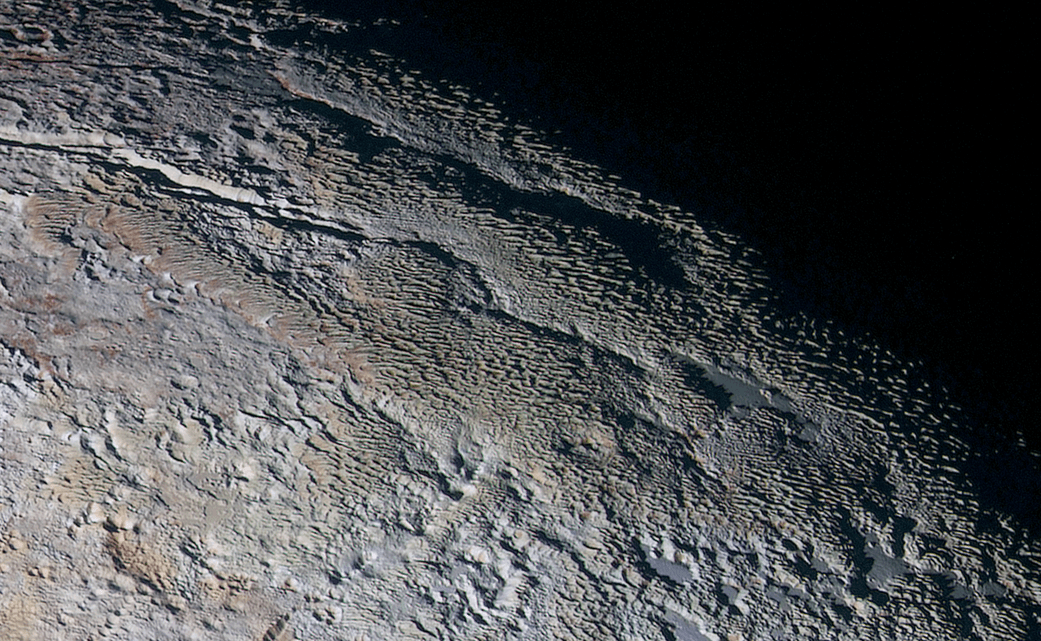The newly detected features on Pluto's surface have been compared to dragon scales and tree bark (NASA)
Newly released high resolution images of the surface of Pluto have revealed an unexpected "rippled" geography covering large areas of the dwarf planet’s surface.
The high-definition images are the latest to be released from NASA’s New Horizons mission, which has described the newest discoveries as “dazzling and mystifying.”
New Horizons’ Bill McKinnon said that the newly discovered features were “a unique and perplexing landscape” which stretch over hundreds of miles: “It looks more like tree bark or dragon scales than geology.”
The ripples are not the only details added by the latest images. Other photographs have revealed that apparently smooth areas of the planet are in fact dippled with dune-like formations several hundred meters across.
According to Professor Monica Grady of Britain's Open University, the images are changing and deepening our understanding of the dwarf planet in new ways, particularly regardings its large ice plains. “It’s really strange. You don’t see any craters — so the ice looks as if Pluto has been resurfaced. And that means the ice has been melting or changing in some way. Pluto should not have any heat source in it to allow these things.”
New Horizons continues to send back data, and is also preparing for its next encounter: a meeting in 2019 with "PT1," a rocky object up to 25 miles across in an area known as the Cold Classical Kuiper Belt.
